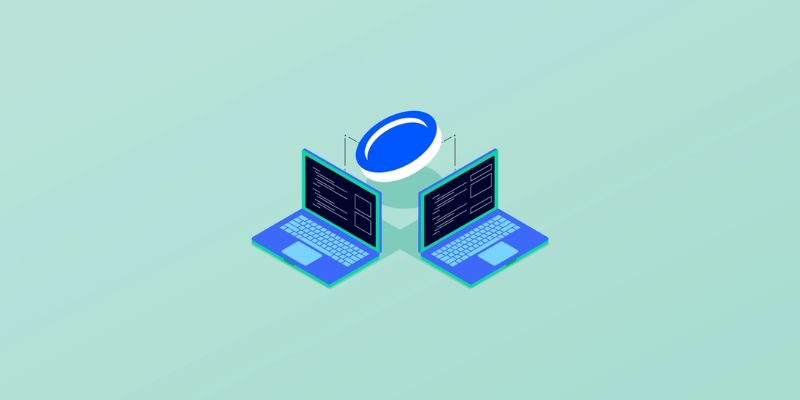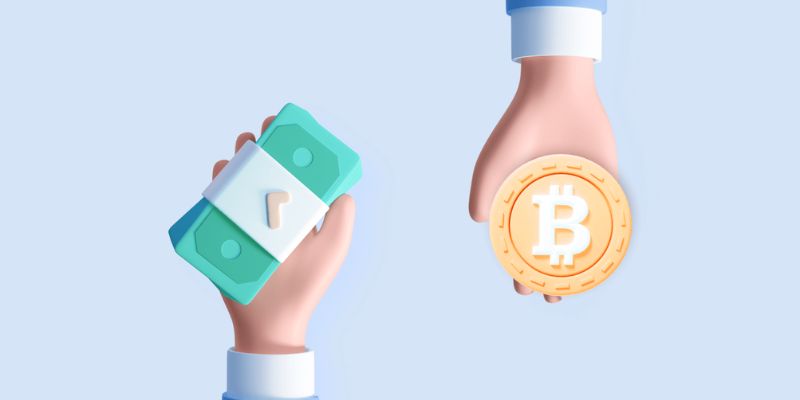Introduction to blockchain technology for beginners can feel like uncharted territory, but I’m here to guide you through it. Ever wonder what magic fuels Bitcoin and other cryptocurrencies? It’s blockchain – a tech marvel that’s reshaping how we think about money and data. But, blockchain isn’t just for the tech-savvy. It’s a game-changer with simple roots in data and security, poised to sweep across industries far and wide. So, let’s break it down. Join me as we peel back the layers of this digital onion, revealing the structure, mechanics, and real-world impact it has. Whether you’re a curious newbie or just need a clearer picture, we’ll tackle the essentials together. Get ready to unveil the backbone of digital currency and beyond, as we dive into the fascinating world of blockchain!
Understanding the Structure and Purpose of Blockchain Technology
The Essence of Distributed Ledger Technology
Imagine a book where you jot down everything you spend. Each page is a list of buys, who paid, and when. Now, think of thousands of copies of this book all over the world. Each copy updates all at once. That’s how blockchain works. It’s a chain of info blocks. Each block has a list of transactions. When a new block fills up, it links to the last one, creating a chain.
Blockchain is digital, letting people across the globe share this info securely and in real time. No one owns or controls the entire thing. It’s a team effort with everyone keeping a close watch. You can’t just change the info in your book. If you try, your book won’t match with the others. So, for any new info to get added, everyone must agree. This trust in numbers makes sure no single person can cheat the system.
The Key Features of Decentralized Networks
A big thing about blockchain is being decentralized. It means not one person or group is in control. Instead, power spreads out. Like a school project with no leader, where everyone has a say. It works because no one wants to let the group down. If you’re thinking, “How do they all agree?” Well, they use rules called consensus mechanisms. They’re like a game plan that everyone follows.
Consensus means making sure everyone has the same info without needing a middleman. Remember the book with spends? Before a new spend makes it onto a block, each copy checks it. They use math problems. It’s hard to add fake spends because you’d have to solve these problems on every book at once. That’s pretty much impossible.
Now, think about using this for money like Bitcoin. That’s a use of blockchain a lot of folks know. You can send Bitcoin without a bank in the middle. It’s you to someone else, straight up. But there’s more. Anywhere you need a clear record, like houses being sold, votes in an election, or who made a handbag, blockchain can be big.
This tech can make all sorts of things better because it’s safe, open, and hard to mess with. It’s not just for tech pros. It’s for anyone who wants a fair system. That’s what keeps a lot of us going. Thinking up new ways to use blockchain. Not just to make money, but to help people trust each other, even when they’re far apart.
Blockchain is a game-changer, shaking up how we think about money and trust. It’s not easy at first, but once you get it, you see why folks are so pumped about it. It’s like building the most secure, fair playground there’s ever been. And we’re all invited to come play, make, and shape it. It’s this spirit of creating something together that can stand the test of time, well, that’s the heart of blockchain.
The Core Mechanics of Blockchain Functionality
The Role of Consensus Mechanisms
Let’s dive right into the heart of blockchain basics: consensus mechanisms. This big word, “consensus,” means an agreement. It is key in keeping a blockchain running smooth and true. These mechanisms make all the computers in a blockchain agree on what info to add. No single person decides. Instead, everyone in the network follows rules to pick new data.
Proof of Work (PoW) and Proof of Stake (PoS) are two popular methods. PoW is like a race. To add new data, a computer must solve a hard math puzzle first. This takes much power and time. PoS is different. Here, the more you own of the currency, the more you can help add data. Both are vital in blockchain security.
How Transactions are Verified and Recorded
Now, how does a blockchain work when it comes to keeping track of all the action? Think of the blockchain as a digital ledger. Every time someone wants to send or receive digital money, that’s a transaction. It’s like saying, “I want to give my friend five coins.”
For this to go on the ledger, it must first be checked. This is where mining comes in. Miners use computers to confirm everything is good. They are like detectives. They make sure no one is lying or trying to cheat. After they agree, they bundle these checks into a “block.”
Then, something called hashing seals the deal. Hashing takes the info and turns it into a string of numbers and letters. It’s a one-way street. You can’t work backwards to find the original info. This hash then links to the last block, making a chain of blocks. Hence, “blockchain.”
This process keeps everything open and easy to check, but also private and safe. It is what makes trustless system blockchain tick. We can all see the deals, but no one can mess with them. That is the immutability feature blockchain is famous for. It’s like writing with a pen that never erases. Once it’s there, it’s there for good.
Each step is part of a larger system. This system gives us a peek at the blockchain revolution’s power. Understanding blockchains can be complex. But, the basics are about making a safe space for trade without the need for a middle man. Blockchain platforms, like the Ethereum platform, even let us make smart contracts. These are agreements that run themselves when certain things happen.
Every time we dig into the blockchain fundamentals, we uncover more layers. It’s a lot to wrap your head around, but it’s also thrilling. This tech could change how we do nearly everything, from buying homes to voting. As we look ahead, the history of blockchain is still unfolding. Its future potential lights up our imaginations. And as we peek into what’s next, it’s important to remember these core mechanics. They are what keep every blockchain ledger honest and every transaction on the level. This is the start of the blockchain for dummies journey, and already, you can see how these basics shape our digital world.
The Applications and Impact of Blockchain
Smart Contracts and Their Implementation
Smart contracts sound complex, but they’re really just like any deal you make—only they’re digital and run themselves. When two people want to trade, they set up a smart contract on the blockchain. This is a set of rules written in code. If you do what the contract says, it will do its part too—no need for a middleman!
These contracts are super smart because once you make them, no one can change them, not even the person who made it. This is perfect for all kinds of uses, like buying a house or sharing music. Plus, when you put that contract on the blockchain, everyone can trust it’s set in stone.
Real-World Blockchain Use Cases in Various Industries
Blockchain isn’t just for tech folks! Farmers use it to track food from the field to your fork, making sure it’s safe. In health care, patient files become easy to share but hard to steal, thanks to blockchain. Shops use blockchain to stop fake goods and make sure what you buy is the real deal. Even voting can use blockchain to count your vote without errors or frauds.
The fun part about blockchain is it’s everywhere, and it keeps getting bigger. Movies, music, and games can be bought and traded with crypto tokens that use blockchain tech. This means your stuff is yours, through a safe, fast system anyone can check. Banks use it to move money without fuss or lost time.
In every industry, from art to space travel, blockchain changes how we think about trade and trust. Blockchain keeps your stuff safe and makes fair trades. This is why we keep hearing about it a lot—it’s a big deal that’s changing the world!
Future Outlook and Ongoing Developments in Blockchain
Challenges in Blockchain Scalability and Governance
Let’s dive into blockchain’s future, looking at big hurdles and exciting changes ahead. Have you ever heard the word scalability? In blockchain, it means making the network faster as more folks use it. But right now, blockchains are like roads at rush hour, slow because so many are using them. To solve this, smart people are working on new ideas. They are like new roads that can handle more cars.
Governance is another big word. It’s how decisions are made in blockchain. Imagine a game where no one knows the rules—chaos, right? Blockchain needs clear rules too. These rules help everyone agree on how it works. But who gets to make these rules? That’s the tricky part. We need a way so that not just a few big players have all the say. Everyone using blockchain should get a voice in the rules. Now, this is a tough nut to crack, but we’re getting there.
Innovations Shaping the Blockchain Landscape
Now let’s talk about the cool stuff changing blockchain today. There are new things called smart contracts. They’re like robot helpers that make deals for you. No lies, no forgetting—just doing what they’re told. Using these, people build new types of games and even ways to lend money online.
Cryptocurrency, the digital cash you may have heard of, is a big part of blockchain. Crypto tokens and coins are like arcade tokens, but online. You can buy things or play games with them. And you know what? They’re safe in your online wallet, like a piggy bank, but for digital coins.
There’s also this thing about private versus public blockchains. It’s like having a diary. A public diary anyone can read, or a private one just for you. Companies like private ones because they control who peeks inside. But folks love public ones too since everything’s out in the open.
We’re also seeing Ethereum grow—think of it like a big theme park where you can build your own rides. It lets folks create new kinds of money games and more. And the best part is, it’s really hard for these rides to break down because of blockchain security.
Lastly, people are talking about the blockchain revolution. It’s like when everyone got smartphones and could find their way without a map. Blockchains are a new kind of map for money and info that’s safer from getting lost or stolen.
Blockchain’s future shines bright, with more speed, fair play, and new gadgets on the horizon. It’s changing how we deal with money and trust, and it’s just getting started. Remembering that big changes take time, we’re watching a new digital world unfold, and it’s exciting to be part of it.
In this post, I’ve walked you through blockchain’s nuts and bolts. From the basics of its structure and decentralized setup to how it makes data secure and transparent. We’ve seen how it brings trust and speed to transactions without needing a middle man.
We also dived into blockchain’s heartbeat: its consensus methods and how they seal deals within the network. Smart contracts and breakthroughs in many fields show us this tech’s muscle in today’s world.
Looking ahead, the road’s got bumps – with scale and rules needing smart fixes. But the innovations coming up? They’re set to jazz up the whole scene.
Blockchain’s not just a buzzword. It’s changing the game, folks. And I’m here for it, watching every step, keeping you in the loop. It’s big, and it’s just getting started. Let’s ride this wave together.
Q&A :
What is blockchain technology and how does it work?
Blockchain technology is essentially a decentralized digital ledger that records transactions across a network of computers. This ledger is made up of blocks of data which contain information about each transaction including the date, time, participants, and value of the transaction. Each block is linked to the one before and after it, creating a chain that is secure due to the fact that each block is encrypted and any change to the information would require altering all subsequent blocks, which is computationally impractical.
Why is blockchain important for beginners to understand?
For beginners, understanding blockchain is important as it is the foundational technology behind cryptocurrencies like Bitcoin and has potential applications far beyond digital currencies, including smart contracts, supply chain management, and even voting systems. Grasping the basics of blockchain can provide insights into the future of technology and the way we interact with digital assets and secure transactions.
Can you explain a simple example of a blockchain transaction?
Certainly! Imagine two people wanting to conduct a transaction, like Alice selling a book to Bob for $10. When they agree on the transaction, it gets submitted to the blockchain network. Computers in the network, called nodes, validate the transaction, checking if Alice has the book and Bob has the $10. Once validated, the transaction is added to a block with a unique, cryptographic signature, which is then linked to the preceding transaction block. This creates a permanent and transparent record of the sale.
How can beginners get started with learning about blockchain?
Beginners can start learning about blockchain by exploring online resources, such as articles, educational websites, and video tutorials that explain the basic concepts. Joining blockchain communities and forums can also be beneficial for networking and gaining insights from more experienced individuals. Additionally, there are many online courses and certifications available that cater to different levels of expertise.
What are some potential uses of blockchain technology?
Blockchain technology has a multitude of potential uses beyond just cryptocurrency. These include securing medical records, simplifying and securing supply chain operations, establishing immutable voting systems, facilitating real estate transactions, enabling identity verification, and creating transparent and efficient platforms for peer-to-peer transactions and smart contracts that execute automatically when conditions are met.



